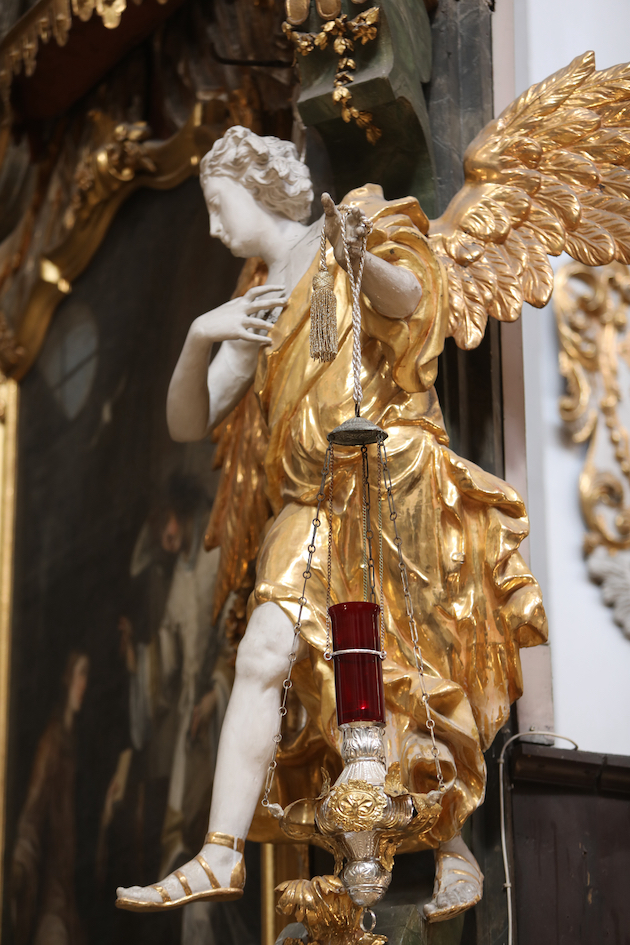
We have seen how the remarkable Asam Brothers – Egid Quirin and Cosmas Damian – collaborated to create St. John Nepomuk, a jewel-box of a church in Munich. It was an example of lay initiative surpassing the wildest dreams of our Vatican II reformers. For the two artist brothers themselves financed, built and decorated the church. St. John Nepomuk is a unified work of art in which architecture, sculpture, painting and stucco – among other disciplines – collaborate, resulting in one of the supreme masterpieces of the baroque age. And all this 125 years before Richard Wagner advocated similar ideals – but oriented around music. He too was active in Bavaria, by the way, but resided mostly in a Protestant region (Bayreuth) that had only come under the Bavarian crown in the 19th century.
The Asam brothers, however, enjoyed only a handful of opportunities like the church of St. John Nepomuk. More typically, they acted as restorers and decorators of stuctures either ancient or built by others. For by the 18th century, the ecclesiastics, religious communities and secular lords of the Catholic half of the Holy Roman Empire were eager to give their churches and palaces a contemporary, magnificent appearance. In such circumstances the brothers had to fit their own art into an existing framework of architecture and art. But in no way did the Asams simply throw a baroque overlay over whatever they found. Rather, they carefully worked to express the architecture and history of the site and as well as to coordinate with any art already in place.
Typical of these commissions was the major reconstruction undertaken between 1731 and 1733 of the monastery of St. Emmeram in Regensburg on which both Egid Quirin and Cosmas Damian worked. Now St. Emmeram was a prime example of the convoluted political and religious relationships of the 18th century German empire. It was located in Regensburg, an “imperial city,” meaning that it was subject to the emperor in Vienna, but was de facto autonomous. Since the 16th century its governing council had been Protestant. Yet the city was dominated by a whole series of politically independent Catholic institutions – the Cathedral, St. Emmeram, the “Ancient Chapel” (Stift unserer lieben Frau zur alten Kapelle), the Scottish monastery, etc. The Prince-Bishop of Regensburg was ruler of his own separate small principality. Finally, Regensburg was in turn surrounded by the domains of the much more powerful, arch-Catholic prince-elector of Bavaria.

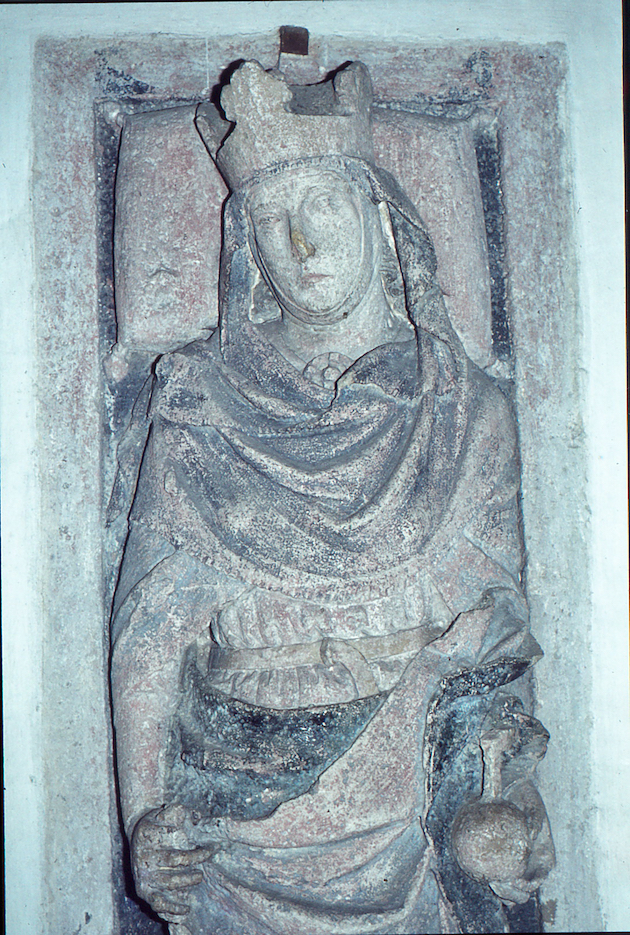
St. Emmeram abbey dates back to the early days of Christianity in this part of Germany and to an early martyr, St. Emmeram. Charlemagne was a benefactor, elements of the original 8th century church are incorporated into the present building, and the monastery enjoyed further imperial favor in the 9th century. Although destroyed and rebuilt several times, the church of St. Emmeram in essence dates back to the 10th century. Numerous noteworthy people are buried here: St. Wolfgang, bishop of Regensburg (Wolfgang Amadeus Mozart!), Emma, Queen of the East Frankish kingdom, Arnulf, Holy Roman Emperor…. Again and again St. Emmeram’s abbey played a major role in the art and politics of Bavaria, the Holy Roman Empire and Germany between 750 and 1100.
In the middle ages the monastery became a free (autonomous) imperial abbey. And in the 18th century its abbot was raised to the dignity of prince-abbot. The redecoration of the church by the brothers Asam commemorates that achievement. In these last years of St. Emmeram’s abbey a great revival of learning and science also took place. A thousand years after its founding this monastery had rediscovered the Benedictine role of spiritual and culural leadership.


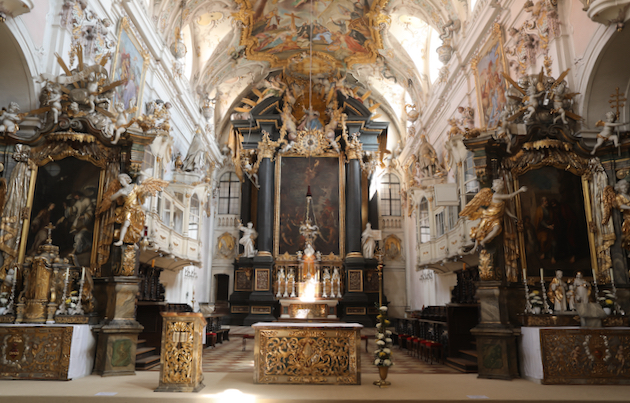
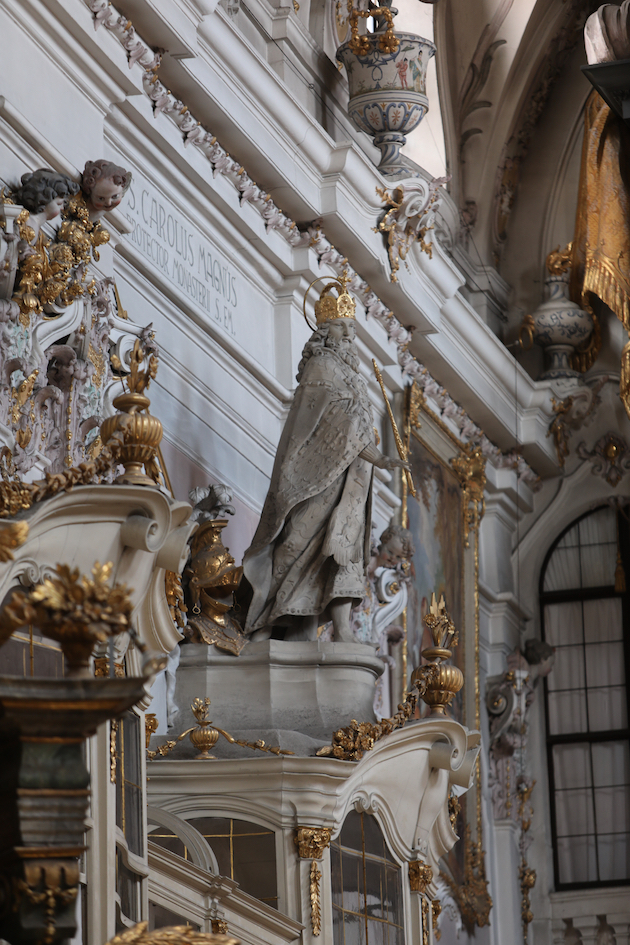

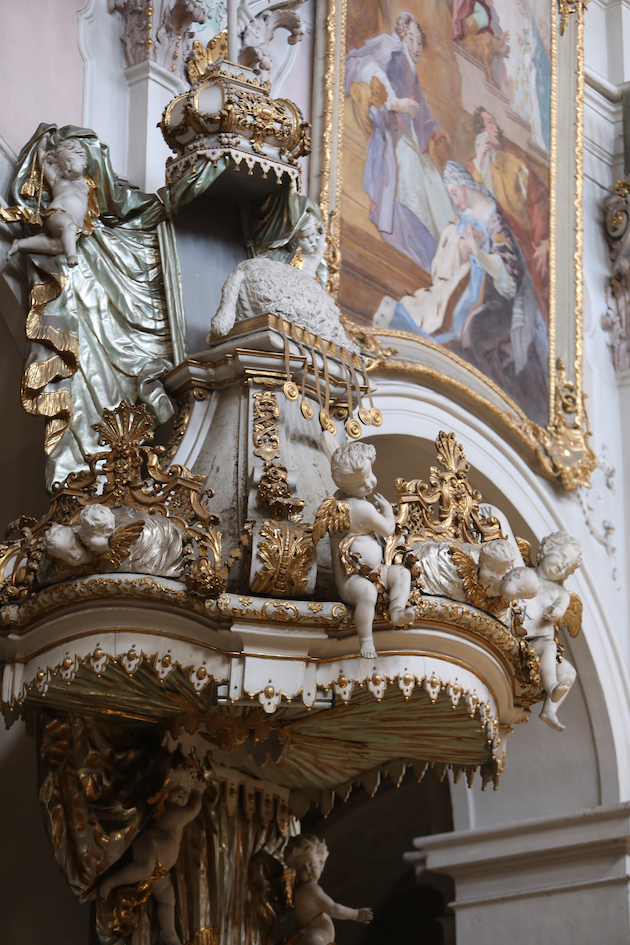

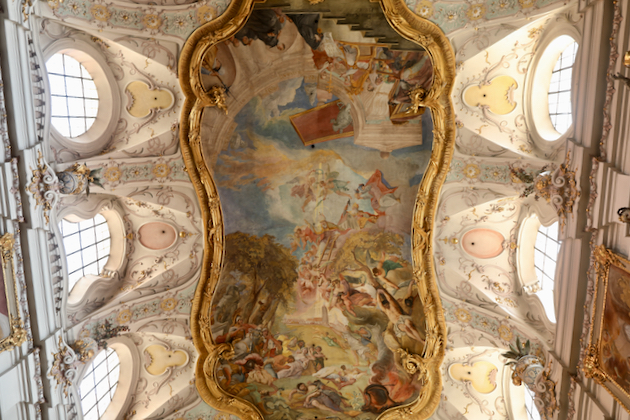
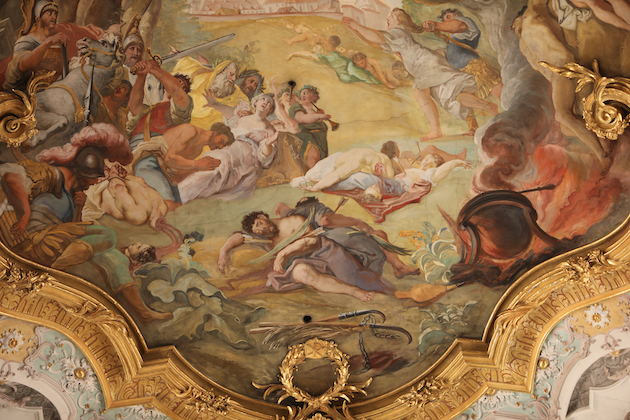
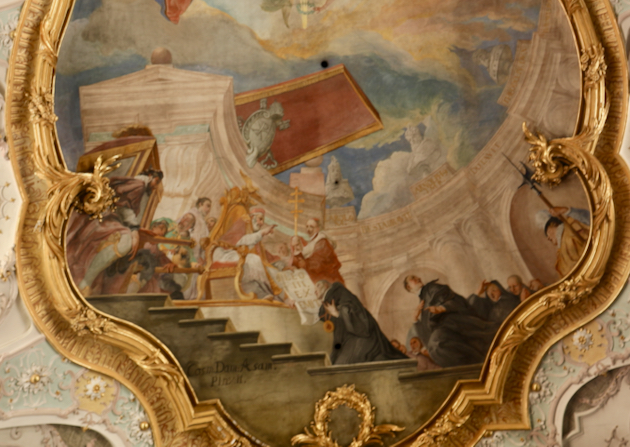
The Asam brothers present to us a vast panorama of the religious and political history of the monastery – from Imperial Roman times to the last decades of the Holy Roman Empire in the 18th century. Of course, the decorative program highlights the privileges, titles and benefactions received over the centuries from popes and secular rulers! For it goes without saying that in this world the sacred and the political realms interact in a climate of “mutual enrichment”; concepts like “separation of church and state” and “healthy secularism” are completely alien to the Holy Roman Empire. After all, at his coronation didn’t the emperor receive a kind of diaconal ordination?
Indeed, the brothers Asam at St. Emmeram go beyond the confines of the Holy Roman Empire, European history and even Christendom. For, as we so frequently encounter in the German baroque, the scope of the decoration expands to embrace all the world then known. The sanctuary fresco shows St. Benedict honored by the four continents (Africa, Asia, Europe and America). Benedictine missionaries arrive by ship in the New World. Elaborate stucco “Chinese” vases, issuing waterspouts, incense or simply functioning as planters, are set about the church.
St John Nepomuk is one of those planned, unified works of art where every part has been deployed as a facet of a larger whole. It represents to perfection one artisic will (even if, in this case, that of two brothers!) at one moment in time in one specific style. St Emmeram, however, has an entirely different charm. It recalls the older churches and basilicas of Rome, such as S. Clemente, Sta Maria Maggiore or Sta Maria in Trastevere, where the succession of ages and styles over the ages conveys to us a sense of the stability of Christendom throughout the flux of time. The diversity of styles at St. Emmeram, the visible ups and downs of the course of history, reveal a great underlying unity. The final contributors to this ensemble, the brothers Asam, were able to preserve and express the historic nature of St. Emmeram while synthesizing these disparate elements into one aesthetically pleasing whole.
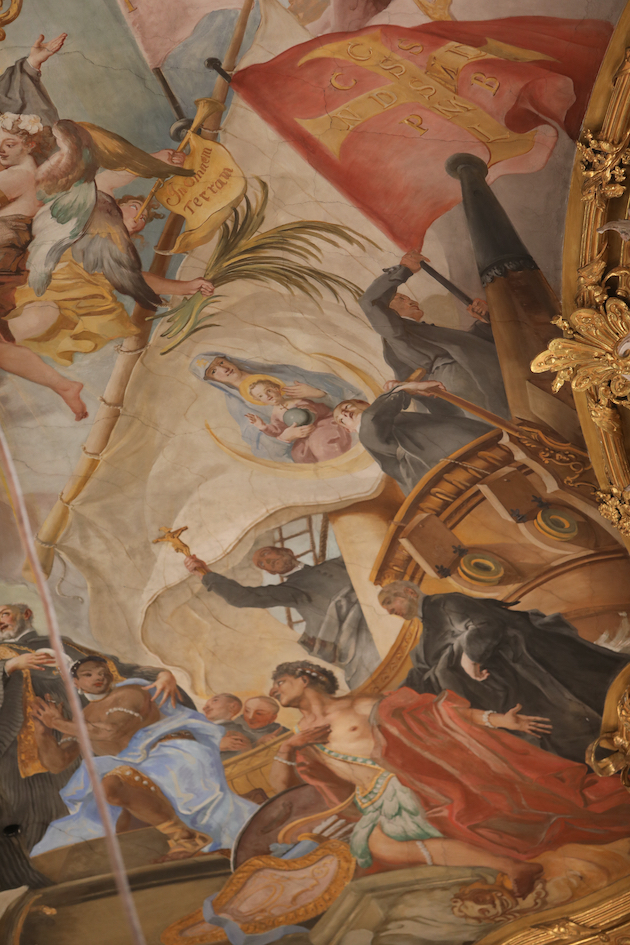

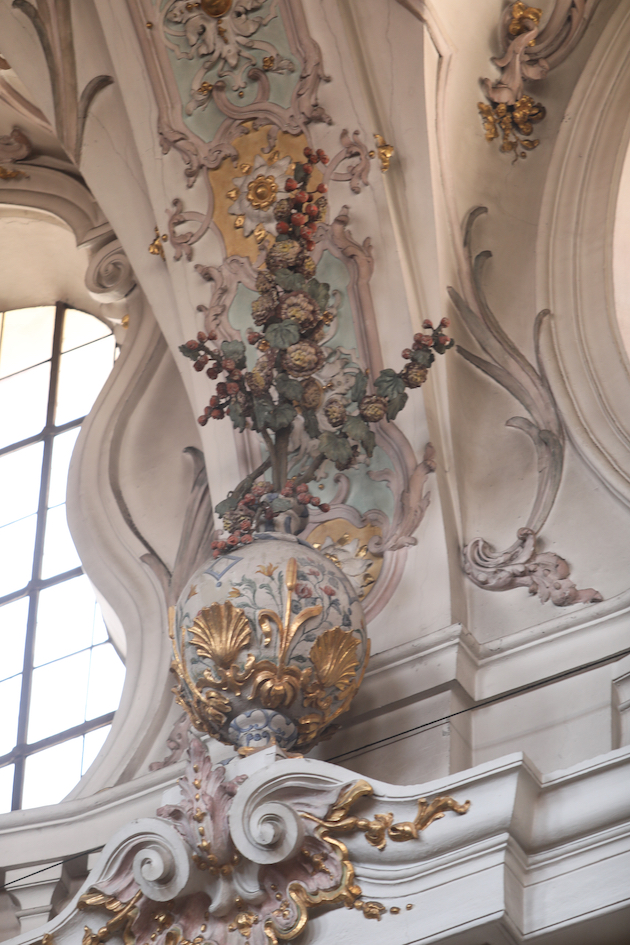
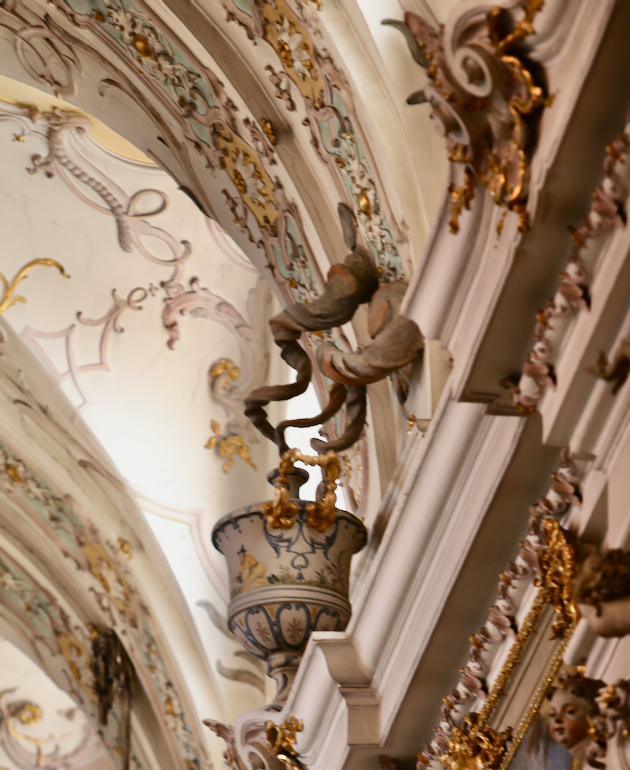
The splendor of St. Emmeram’s did not last long. Despite the new renown it was winning in education and scholarship, St. Emmeram’s, like almost all its sister German monasteries, was secularized at the beginning of the 19th century as the Holy Roman Empire was liquidated. It fell into the hands of the Bavarian state. The monastic community was dispersed, many of the abbey’s treasures taken to Munich and the grand abbey of St. Emmeram became a simple parish church. The monastery buildings other than the church, however, became the main palace of the House of Thurn und Taxis. Now the connection of this princely house with Regensburg is itself a fascinating chapter in the story of the Holy Roman Empire – it relates to its involvement with the “perpetual diet”(parliament) of the empire which convened in this city since 1663. In any case, the Princes of Thurn und Taxis have remained resident at St Emmeram’s to the present day. And more recently, the supporters of Catholic Tradition have had reason to be grateful to Princess Gloria of Thurn und Taxis for her generous support. Dare we say that, in a sense, a new spiritual chapter is being written in the 1300-year history of St. Emmeram’s?

Sources:
- St. Emmeram/Regensburg, Schell Kunstfuehrer Nr. 573 ( 6th edition, 1979)
- https://de.wikipedia.org/wiki/Johann_Baptist_Kraus_(Benediktiner)
- https://de.wikipedia.org/wiki/Kloster_Sankt_Emmeram
Related Articles
No user responded in this post